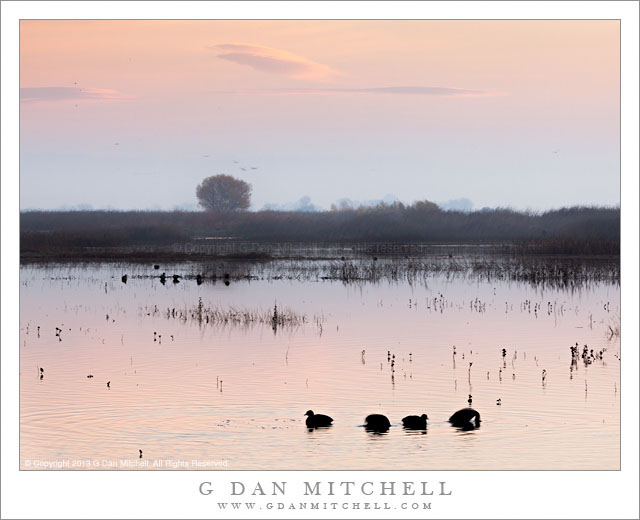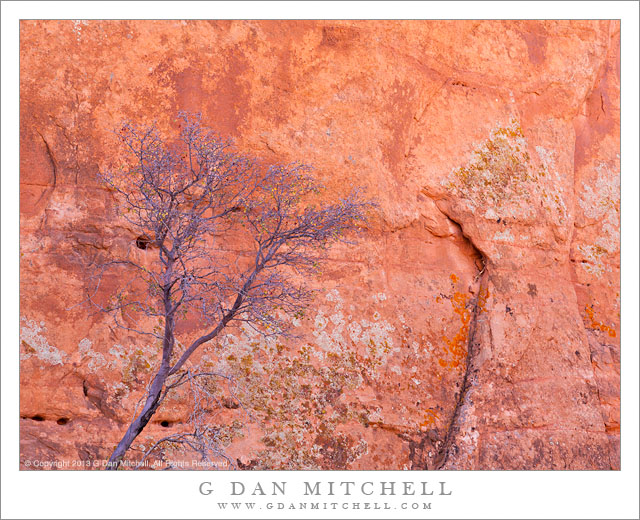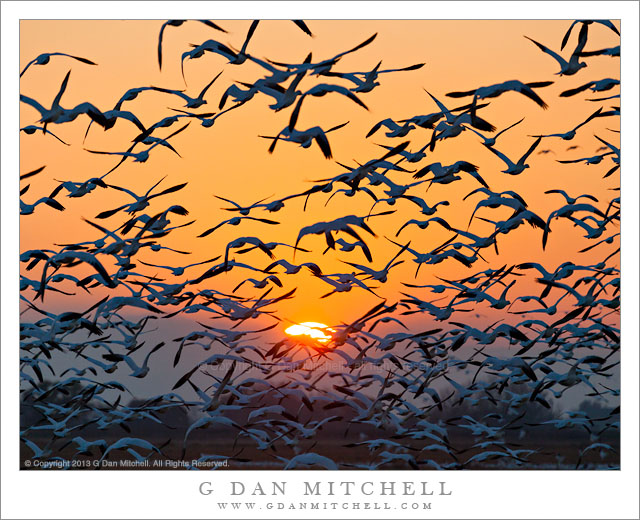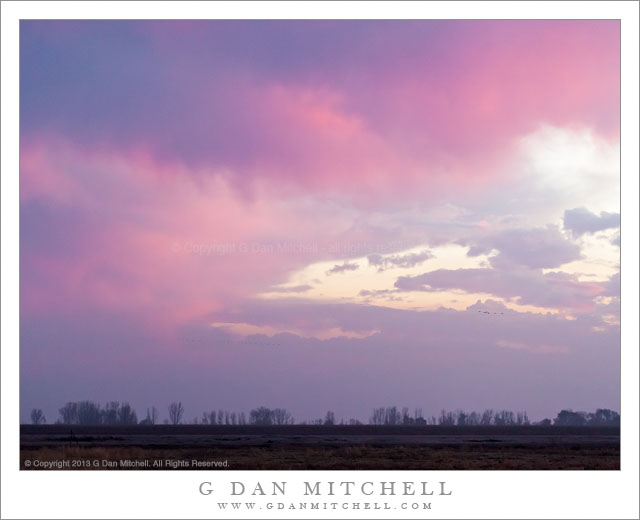
Pre-Dawn Light, San Joaquin Valley. Central Valley, California. December 2, 2013. © Copyright 2013 G Dan Mitchell – all rights reserved.
Pre-dawn light and thin fog above marshland in California’s San Joaquin Valley
A foggy fall landscape with birds from California’s San Joaquin Valley, where I often go at tho time of year to photograph migratory birds and the often foggy, cold, and damp places they live. The region is largely agricultural, with lots of cattle being raised nearby – but in the winter the pastures are flooded and a huge variety of birds can be found here, including geese, herons, white pelicans, cranes, ibises, egrets, and more.
As I usually do, I left the San Francisco Bay area very early in the morning, well before dawn, so that I could arrive here before the sun came up. I had already been shooting a while when I stopped next to this pond where a small group of coots (?) were clustered together. I had been looking for some sort of foreground focus around which to build a photograph that included those interesting clouds over in the direction of the Sierra Nevada, clouds that here are just beginning to pick up the dawn light that had yet to reach the valley, were there was still a light blanket of fog.
 G Dan Mitchell is a California photographer and visual opportunist whose subjects include the Pacific coast, redwood forests, central California oak/grasslands, the Sierra Nevada, California deserts, urban landscapes, night photography, and more.
G Dan Mitchell is a California photographer and visual opportunist whose subjects include the Pacific coast, redwood forests, central California oak/grasslands, the Sierra Nevada, California deserts, urban landscapes, night photography, and more.
Blog | About | Flickr | Twitter | Facebook | Google+ | 500px.com | LinkedIn | Email
Text, photographs, and other media are © Copyright G Dan Mitchell (or others when indicated) and are not in the public domain and may not be used on websites, blogs, or in other media without advance permission from G Dan Mitchell.



